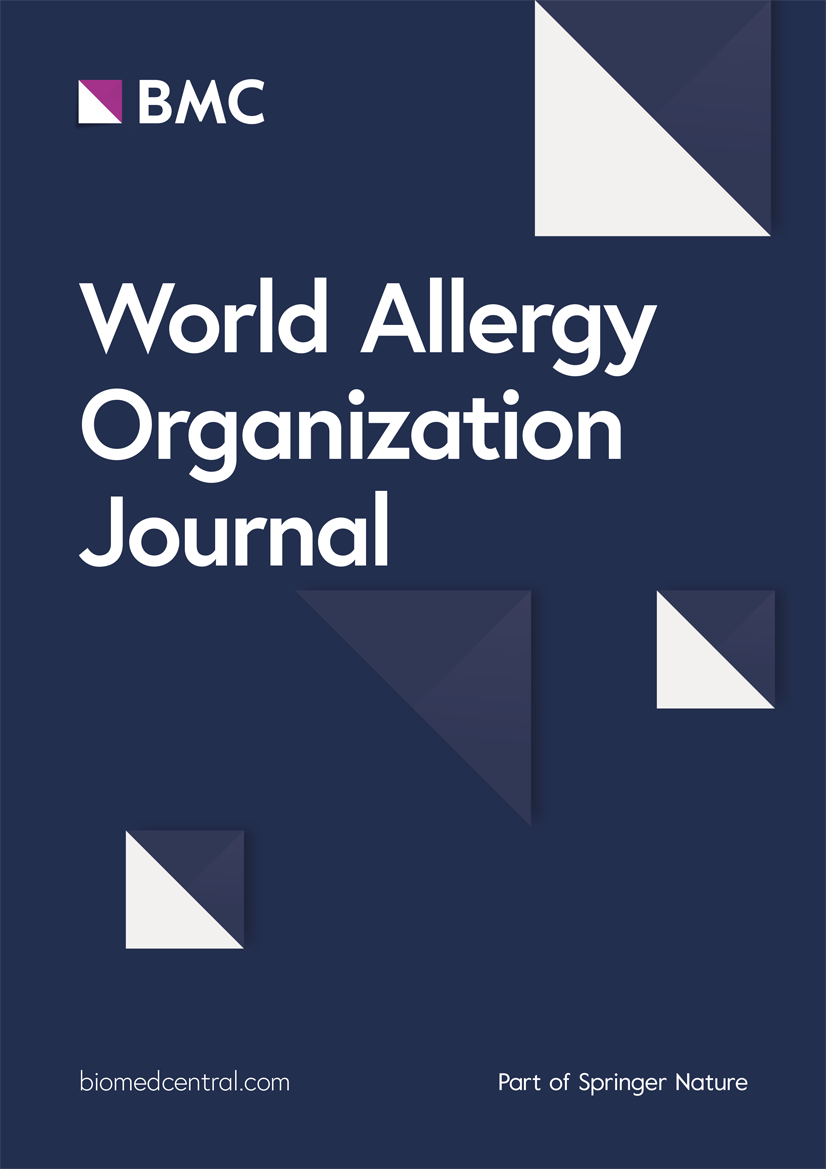舌下免疫治疗对变应性鼻炎患者的疗效和安全性:一项随机、双盲、安慰剂对照试验
IF 4.3
2区 医学
Q2 ALLERGY
引用次数: 0
摘要
背景过敏原免疫疗法是唯一可以改变过敏性疾病自然病程的治疗方法。舌下免疫疗法(SLIT)是一种很有前景的治疗方法,尤其适用于儿童。方法这是一项双盲、随机、安慰剂对照试验,采用舌下免疫疗法治疗屋尘螨诱发的过敏性鼻炎(AR)。共有 65 名 12-16 岁的患者接受了为期 12 个月的治疗,并随机分为 SLIT 组和安慰剂组。SLIT组接受的是Dermatophagoides pteronyssinus和Blomia tropicalis过敏原的组合。通过皮肤点刺试验或血清特异性 IgE 确认是否致敏。研究期间还确定了鼻部症状总评分(TNSS)、鼻结膜炎生活质量问卷(RQLQ)、当前治疗情况以及控制症状的药物需求。在基线以及治疗后 6 个月和 12 个月,对 Der p 1 和 Blo t 的血清总 IgE、血清特异性 IgE 和 IgG4 水平进行了评估。与安慰剂相比,SLIT 组为控制症状而使用的抗组胺药明显减少(p < 0.0001)。SLIT组与安慰剂组相比,两种过敏原的血清总IgE、血清特异性IgE和IgG4均无明显变化。"结论1年后,使用1微克Der p 1/天和753 UBE Blo t/天剂量的SLIT降低了突破性症状对药物的需求,安全性良好。本文章由计算机程序翻译,如有差异,请以英文原文为准。
Efficacy and safety of sublingual immunotherapy using a combination of Dermatophagoides pteronyssinus and Blomia tropicalis extracts in patients with allergic rhinitis: A randomized, double-blind, placebo-controlled trial
Background
Allergen immunotherapy is the only treatment that may modify the natural course of allergic diseases. Sublingual immunotherapy (SLIT) is a promising treatment, especially for children. Few studies currently exist related to optimal dosing for Blomia tropicalis.
Methods
This was a double-blind, randomized, placebo-controlled trial of SLIT to treat house dust mite-induced Allergic Rhinitis (AR). A total of 65 patients, ages 12–16 years, were treated for 12 months and randomized into SLIT versus placebo. The SLIT group received a combination of Dermatophagoides pteronyssinus and Blomia tropicalis allergens. Sensitization was confirmed by skin prick test or serum specific IgE. Total Nasal Symptom Score (TNSS), Rhinoconjunctivitis Quality of Life Questionnaire (RQLQ), current treatment, and need for medication to control symptoms were ascertained during the study. Total serum IgE, serum specific IgE, and IgG4 levels for Der p 1 and Blo t were assessed at baseline and, 6 and 12 months after treatment.
Results
There was no significant difference in the number of adverse events between groups. The SLIT group showed a significant reduction in antihistamine use to control symptoms (p < 0.0001) compared to placebo. There was no significant change in serum total IgE, serum specific IgE, and IgG4 for either allergen when comparing the SLIT and placebo groups.
Conclusion
After 1 year, SLIT using a dose of 1 mcg of Der p 1/day and 753 UBE of Blo t/day lowered the need for medications for break-through symptoms, with a good safety profile."
求助全文
通过发布文献求助,成功后即可免费获取论文全文。
去求助
来源期刊

World Allergy Organization Journal
Immunology and Microbiology-Immunology
CiteScore
9.10
自引率
5.90%
发文量
91
审稿时长
9 weeks
期刊介绍:
The official pubication of the World Allergy Organization, the World Allergy Organization Journal (WAOjournal) publishes original mechanistic, translational, and clinical research on the topics of allergy, asthma, anaphylaxis, and clincial immunology, as well as reviews, guidelines, and position papers that contribute to the improvement of patient care. WAOjournal publishes research on the growth of allergy prevalence within the scope of single countries, country comparisons, and practical global issues and regulations, or threats to the allergy specialty. The Journal invites the submissions of all authors interested in publishing on current global problems in allergy, asthma, anaphylaxis, and immunology. Of particular interest are the immunological consequences of climate change and the subsequent systematic transformations in food habits and their consequences for the allergy/immunology discipline.
 求助内容:
求助内容: 应助结果提醒方式:
应助结果提醒方式:


